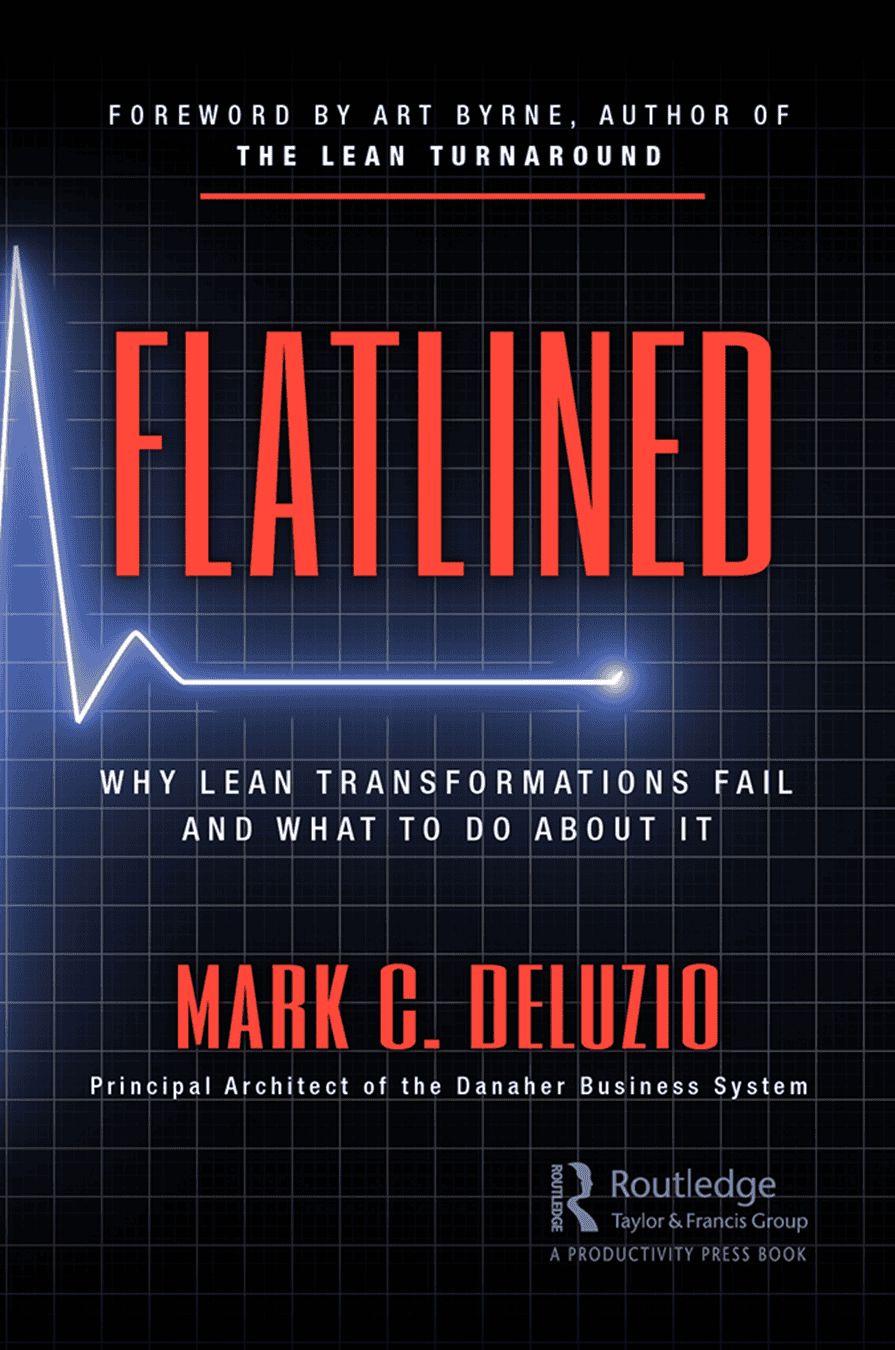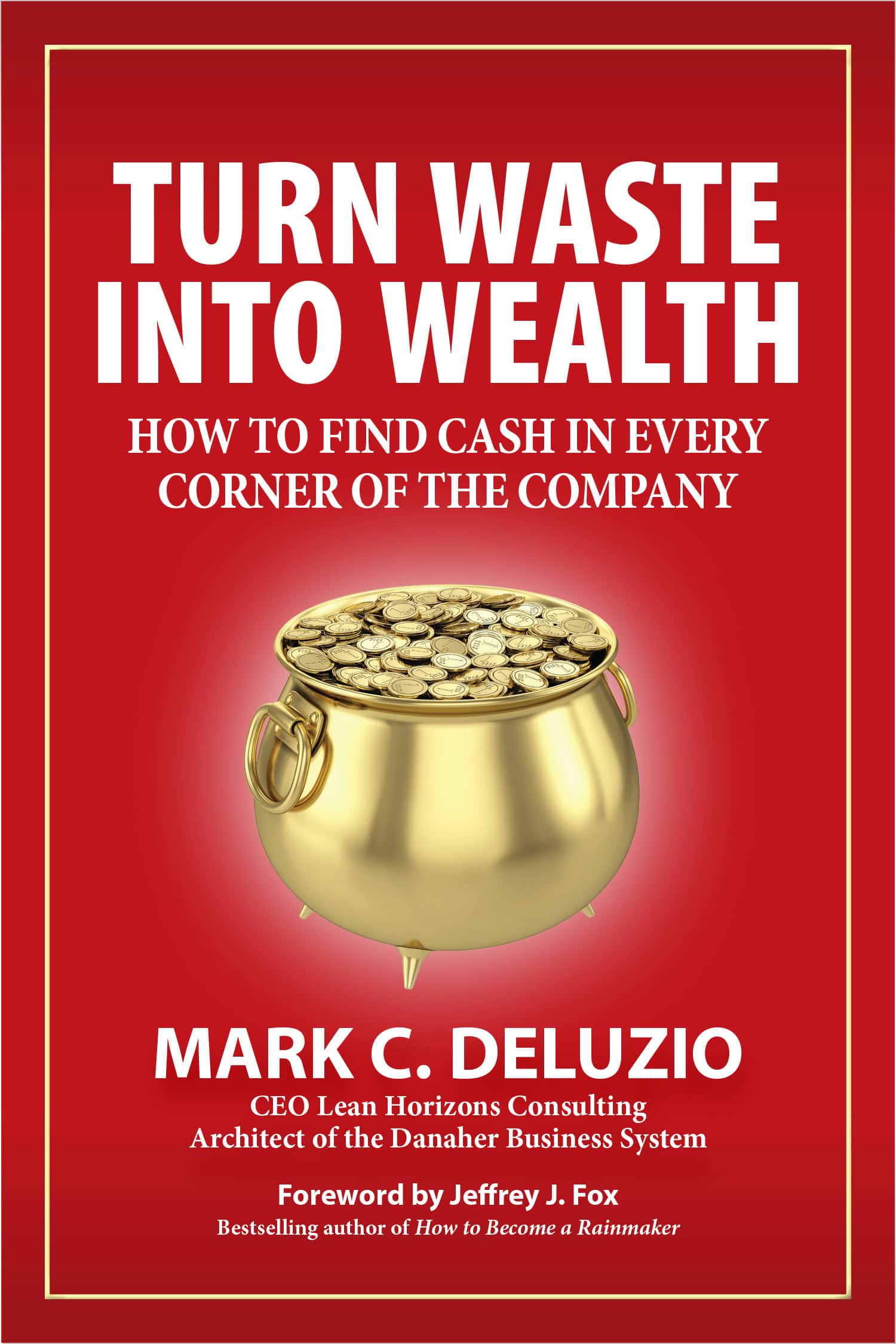Introduction
Having had the fortunate opportunity to be the principle architect of the Danaher Business System (DBS), I am often asked what it is and how it compares to the Toyota Production System (TPS). Much has been written about TPS, almost to a fault in my opinion. Academics have spent countless years studying Toyota but have failed to understand how companies who are classified as “Brownfield” environments implement change and strive for excellence. Don’t get me wrong, I think that Toyota is one of, if not the best manufacturing companies in the world today. Danaher, as successful as they have been, does not come close to matching Toyota’s manufacturing capabilities. However, Danaher took a more comprehensive approach to what we now call Lean. Originally, Danaher’s process was called the Danaher Production System (DPS) and was shamelessly modeled after TPS. Early on, we changed the name to the Danaher Business System to reflect that our focus needed to be more business-oriented rather than strictly focused on manufacturing. (I know some will debate me on the fact that TPS is more than manufacturing…I got that. However, I will explain below how DBS has evolved and from my understanding, it is much more comprehensive than TPS.)
By having a more comprehensive approach, Danaher has become one of the most profitable industrials in history. (Note: Toyota’s Gross Profit in 2018 was 17%, while Danaher’s was north of 50%.) I know that profitability is not the only measure when evaluating a business system, but it would be hard to convince me that it doesn’t deserve to be ranked rather high on the list.
DPS evolved from the work we did at a Danaher division called Jacobs Manufacturing, affectionately known as JAKE BRAKE. At Jake, the spark was lit in 1987 which ignited the modern Lean movement in the USA. In the 1980’s Jake Brake was an arrogant company who hid behind their patent as they continued to provide poor customer service and quality. It was a traditional batch & queue manufacturing company with all of the ills that go along with that. Under the leadership of Art Byrne and George Koenigsaecker, we were the first to bring the consulting firm Shingijutsu to the USA (1987). Shingijutsu was comprised of Taiichi Ohno’s first lieutenants from his Autonomous Study Group. We basically transformed the company by our version of TPS, called the Jacobs Production System (JPS) and returned Jake to profitability in just a couple of years. When George Sherman became CEO in 1990, he asked me to “do for Danaher what you guys did to Jake Brake.” I went to work for him directly and began a journey that none of us realized was to be a part of industrial history. The Danaher Business System was born, and for nine years, I oversaw the evolution of DBS. Yes, we made many mistakes, which will be the subject of another article. But it is important to understand that DBS started out as a carbon copy of TPS. Even though we were nowhere close to matching Toyota in the application of TPS, we continued to perfect our application as well as evolving the scope of DBS, as I will outline below.
Understanding DBS – A Few Points to Consider
- It is important to understand that DBS works for Danaher and Danaher’s culture. It should not be copied without critical thought. The same can be said about TPS. Pundits insist that companies copy Toyota, that TPS is the only way. Blindly copied, TPS will not work in any other organization. Nor will DBS. Companies need to develop their own business system that works for them. Yes, there are many attributes that can be adopted from DBS and TPS, but customization is key. With that said, the one thing we did not compromise on were the underlying TPS principles. That was key!
- Being an industrial company, Danaher’s original focus was on manufacturing. We learned early on that the root cause of many of the issues found on the shop floor resonated from other functions in the company. So, we expanded our scope and applied TPS principles to areas such as Sales, Finance, Human Resources, Engineering, etc.
- DBS initially focused on achieving operational performance improvements through what I call “Point Kaizens” where a single process or function was the focus for improvement. We learned that we needed to gravitate to “Enterprise Kaizen” where we needed to harness the cooperation and behavior change from all functions within the company. For example, a Sales & Operations Planning Process (S&OP) must involve all functions of the company in order to be successful. Each of these functions need to make drastic changes to their beliefs and practices and learn how to optimize the entire organization as opposed to their singular function. If leaders of these functions are not grounded in the fundamental principles, a company will never achieve an enterprise transformation. I have found that this is where most companies “Flatlined” (the title of my soon to be released book on the subject).
- The initial focus of DBS was to improve Safety, Quality, Delivery and Cost (SQDC). However, as we achieved decent improvements in SQDC, we learned that DBS can be used as a Growth (G) vehicle as well.
- In the early stages, we realized that we needed to be more strategic as to how to deploy our DBS resources. I introduced Policy Deployment (what I now call Strategy Deployment) to provide us a compass in order to achieve our strategic breakthrough objectives. (Note: these breakthrough objectives could apply to any combination of SQDC&G.) But we had a mantra: You had to earn the right to grow. If your operating metrics (SQDC) were not sound, you were not allowed to focus on growth. Policy Deployment not only informed us of what we needed to work on, it also forced us to make a conscious decision as to what NOT to work on. The implementation of the Policy Deployment process was a huge evolution of DBS and it took us a few years to get it right. I am happy to say that 25 years later, Danaher still considers Policy Deployment as a key element of DBS.
- As the original DBS tool set contained traditional TPS tools (Standard Work, 5S, SMED, Kanban, Problem Solving tools, etc.) we started to add to our business system other tools as well. For example, we added Human Resource tools, Strategic Planning, Growth tools, Lean Accounting, New Product Development, and many other “weapons.”
- We learned that becoming proficient in the tools of DBS was critical to our success, however, it was not enough. I made the analogy that knowing how to use each and every tool in building a house (ex: a hammer, saw, nail gun, etc.) does not guarantee you would know how to build a house. So, DBS was all about building a house, not the successful execution of tools. To us, building a house was to evolve our organization where all critical stakeholders’ objectives were met. We defined our primary stakeholders as Employees, Customers and Shareholders. We strived for a “win-win-win” scenario and avoided a zero-sum game.
- At one point in our evolution, we had to fight the onslaught of Six Sigma zealots that entered the organization. They attempted to prioritize Six Sigma over the entire DBS infrastructure, ignoring the power of DBS and actually moved to replace DBS with Six Sigma. These zealots came from companies such as GE, Honeywell and other companies who made the crucial mistake of developing their business system around the Six Sigma tool. At Danaher, we insisted that DBS needed to be built around a set of philosophies and principles, not a tool(s). Guided by these principles, the tools were merely a vehicle for us to meet our stakeholders’ objectives. Make no mistake about it, Six Sigma was an important tool in our DBS toolbox. However, we did not elevate the importance of this tool and it sat equally alongside all of the other tools in the toolbox, not any more or any less important than the rest of the tools. Several internal battles ensued as these Six Sigma zealots formed Six Sigma councils, clubs, held separate meetings of those who were worthy (in other words, those who were “belted”), and alienated the rest of the organization who we felt were crucial to the success of Danaher. We eventually extinguished this movement; however, a lot of valuable time and energy was spent away from our focus in order to fight this battle
Summary
Consistent with the Lean philosophy of continuous improvement, DBS was and still is under a continual state of improvement, refinement, and evolution. Having weathered the Six Sigma storm mentioned above, we became very skeptical of consultants and academics peddling their newest book or silver bullet. We were open to new ideas, however we found that most new offerings were either a repackaging of existing approaches, were in conflict with the underlying principles of DBS or were viewed by us as something that would take us away from perfecting the basics of DBS.
In summary, the principles and tools of the Toyota Production System form the underlying foundation of the Danaher Business System. Contrary to the pundits and academics who have made a living promoting the merits of TPS, we knew that we could not blindly copy TPS. We learned that we did not want to become “like Toyota”, we strived to become “Toyota like.” As a result, we built a business system that propelled Danaher to be one of the most successful diversified industrials in the world, far exceeding the performance of many iconic companies, including Toyota.

